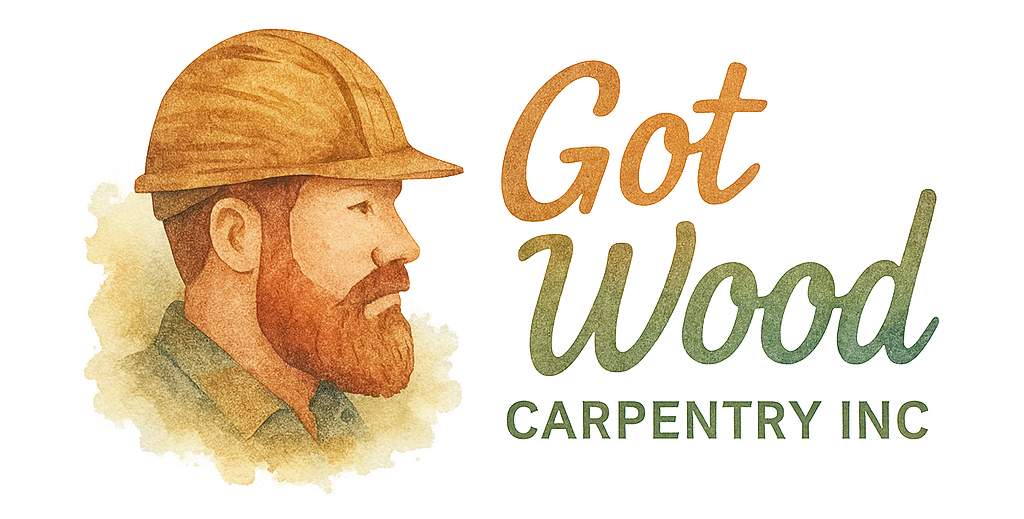Carpentry is an exciting and rewarding craft that involves shaping, cutting, and assembling wood to create everything from furniture to intricate structures. Whether you’re working on custom furniture or looking to tackle a residential carpentry project, learning the essential carpentry skills is crucial for building a solid foundation. If you’re just getting started in the world of woodworking, it’s important to develop the right techniques, knowledge, and tools to help you succeed. Below, we’ll dive into the top 10 carpentry skills every beginner should learn.
1. Mastering the Use of Basic Carpentry Tools
Before you start any woodworking project, becoming familiar with essential carpentry tools is critical. Tools like hammers, saws, and screwdrivers are the basics, but knowing how to properly use woodworking tools will increase your accuracy and speed. Over time, you can expand your toolkit to include more advanced tools for specific projects, such as decking and outdoor structures.
The key here is to start with the basics and practice using your tools in various ways to get comfortable with them.
2. Learning to Measure and Mark Precisely
Carpentry is all about precision. Whether you’re building a deck or working on bathroom carpentry, measuring accurately is one of the first and most crucial skills you’ll need. Start with a measuring tape, square, and marking tool, and learn to measure lengths, angles, and depths.
A good carpenter knows that even a small error in measurement can lead to problems down the line. Accurate marking ensures that your cuts are straight and your pieces fit together properly, whether you’re making classic homes or custom designs.
3. Cutting with Precision
Once you’ve got your measurements down, the next step is cutting your wood accurately. There are various cutting tools to consider, such as handsaws, jigsaws, and circular saws. For beginners, start with manual tools like beginner tips on proper sawing technique, and gradually move on to power tools as your skills improve.
If you’re making something like luxury custom work, precision in your cuts is essential for achieving the perfect fit.
4. Assembling and Joining Wood Pieces
One of the cornerstones of carpentry is joining pieces of wood together. This can be done with various techniques, including nailing, screwing, and gluing. You can also explore more advanced methods like dovetail joints or tongue-and-groove joints for more intricate work like custom furniture.
A well-joined piece is sturdy and can withstand wear and tear. As a beginner, practice with different joints and experiment with woodworking errors so that you can improve your technique.

5. Sanding and Finishing Wood
Once your pieces are assembled, the finishing touches are important for a smooth and polished look. Learning to sand your wood properly and apply finishes like stains, varnish, or paint is essential for a professional-looking result. A woodworking education will help you understand the types of finishes suitable for different wood types, ensuring longevity and aesthetic appeal.
Proper sanding removes rough edges, and a good finish protects the wood from environmental factors.
6. Installing Trim and Molding
Trim and molding can add elegance and sophistication to any project, from office design to classic home designs. The ability to cut and install trim and molding is a vital skill for any carpenter, as it enhances the visual appeal of a space. Start by learning how to measure, cut, and install basic trim pieces, and gradually progress to more complex designs.
Be sure to understand the different molding styles, whether it’s for windows, doors, or baseboards. This skill is essential for projects where aesthetics matter most.
7. Understanding Wood Types and Their Uses
Each type of wood has unique properties that make it suitable for different tasks. For example, decking wood should be durable and weather-resistant, while softwood may be easier to work with for outdoor carpentry projects.
Understanding wood grain, moisture content, and how wood expands and contracts will help you choose the right material for your carpentry needs. For beginners, it’s important to start with the most common woods and their uses in residential and commercial carpentry projects.
8. Creating Strong Structures with Basic Framing
For larger projects like building homes or commercial spaces, you’ll need to understand basic framing. Framing involves constructing the skeleton of a building, including walls, roofs, and floors. Knowing how to frame effectively is key to creating a structurally sound building. It’s best to practice by constructing smaller frameworks and gradually move to larger ones.
Commercial carpentry projects require robust and reliable framing techniques, and learning these skills early will help you tackle more advanced projects later on.
9. Developing the Skill of Planing
Planing is another important carpentry skill that helps you smooth wood surfaces or reduce the thickness of wooden boards. A hand plane or power planer can be used to shape and smooth out rough or uneven surfaces, which is crucial for fine woodworking, such as custom work or building luxury decks.
A good planer helps remove imperfections, leaving your wood smooth and uniform for a more polished final product.
10. Safety and Maintenance
Finally, knowing how to work safely with all of your tools and equipment is crucial in any carpentry project. Always use protective gear, such as goggles, ear protection, and dust masks, when operating tools. Additionally, learning to maintain and clean your tools will extend their life and ensure they work efficiently.
Incorporating good safety practices into your routine will help you avoid injuries and complete projects with confidence. Learn more about carpentry safety by exploring the safety guidelines for different tools and techniques.
Conclusion
Carpentry is an invaluable skill that opens doors to creating functional and beautiful pieces of woodwork. Whether you’re interested in residential carpentry, custom furniture, or woodworking for outdoor structures, mastering these 10 essential skills will provide you with a solid foundation to build upon.
Remember to start small, practice regularly, and seek out educational resources, like woodworking tips and guides, to refine your skills over time. With patience and dedication, you can become proficient in carpentry and enjoy the satisfaction of creating your own projects.
FAQs
1. What carpentry tools should a beginner start with?
A beginner should start with basic tools like a hammer, measuring tape, saw, screwdriver, and a level. As you gain experience, you can invest in more specialized tools.
2. How can I improve my carpentry skills quickly?
Practice is key! Work on smaller projects to develop your skills and learn from your mistakes. Consider taking carpentry courses or reading woodworking tips.
3. Is it hard to learn carpentry?
Carpentry can be challenging at first, but with consistent practice, the skills will come naturally. Start with simple projects and work your way up.
4. What are some common mistakes beginners make in carpentry?
Common mistakes include inaccurate measurements, improper use of tools, and poor safety practices. Learning from these mistakes is part of the process.
5. Can I learn carpentry without formal training?
Yes, many people start learning carpentry through online resources, DIY guides, and hands-on practice. However, formal training can accelerate your learning and help you understand advanced techniques.
6. How do I choose the right wood for a project?
Consider the purpose of your project and the wood’s durability. For example, use decking wood for outdoor structures and hardwood for furniture.
7. What are the best woodworking projects for beginners?
Start with simple projects like building a small shelf, a birdhouse, or a picture frame. These will teach you the basics of measuring, cutting, and assembling.


